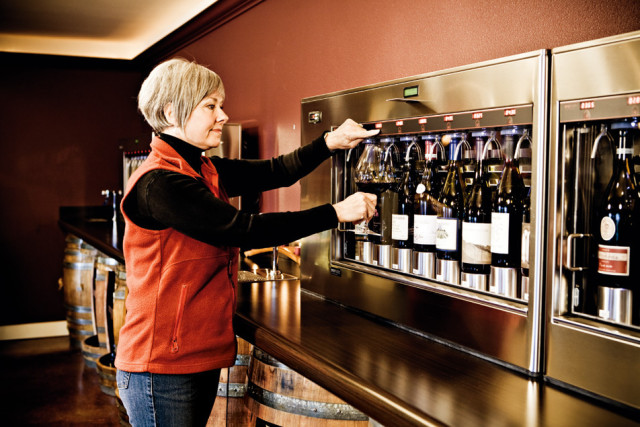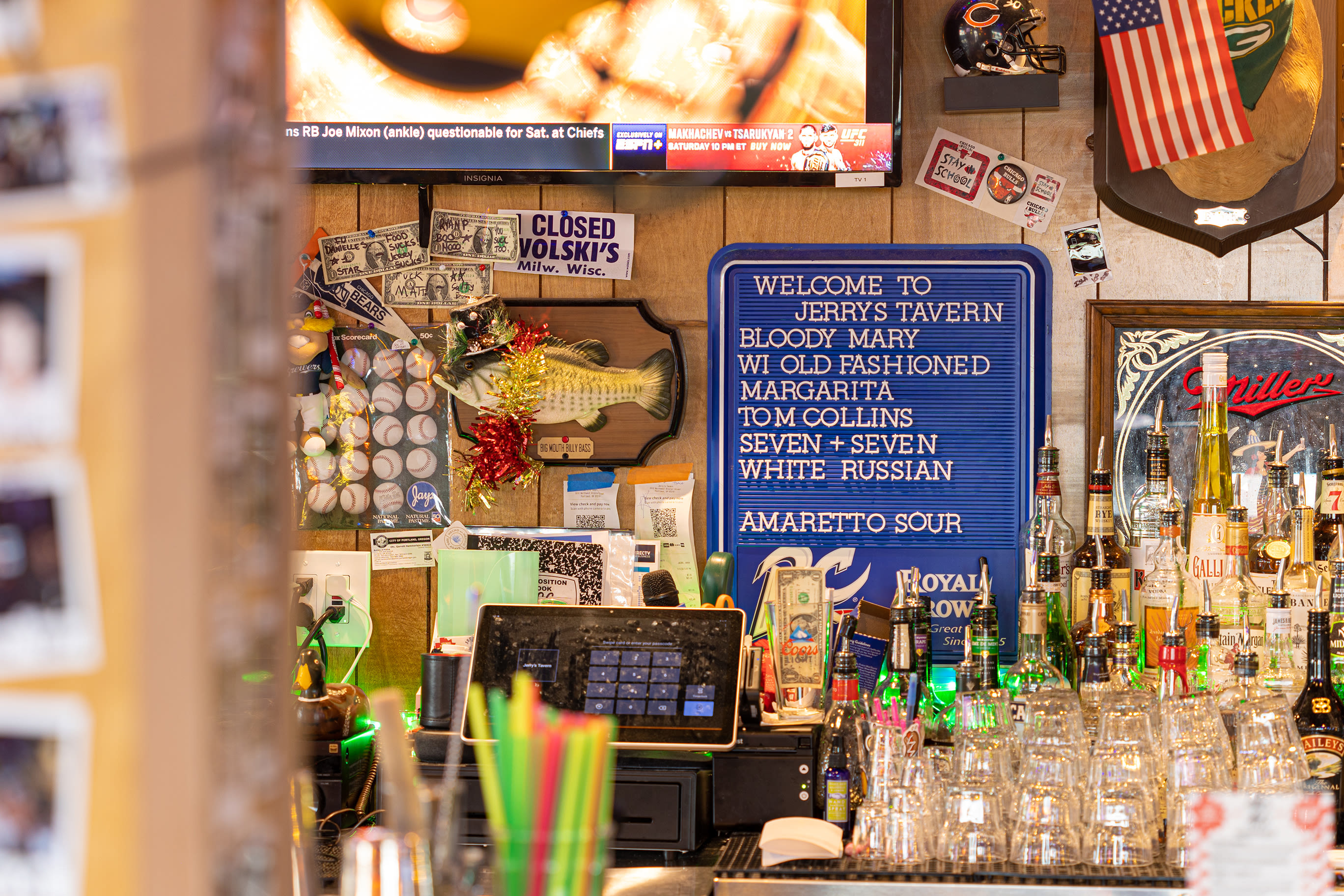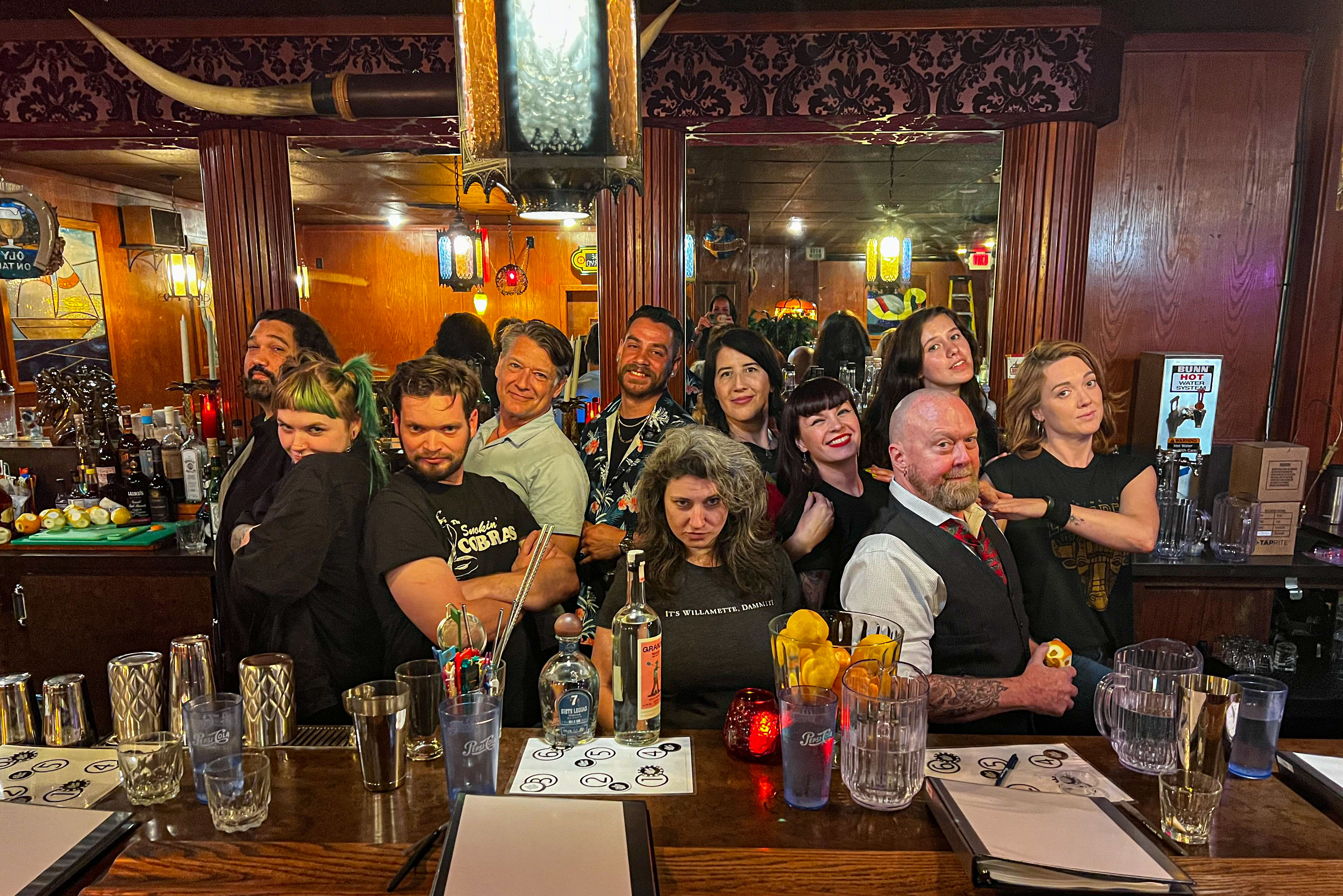Vinomatic

SET INTO THE WALLS of a former horse barn just outside of Carlton, temperature-controlled cases made of steel and glass guard 56 bottles of Willamette Valley wine, all lined up at eye level, uncorked and ready to taste. After pointing out my selection—an experience not unlike choosing a live lobster from a tank—an affable server inserts my microchipped wine-tasting card into a slot, presses a small red button, and the gleaming Enomatic wine preservation system whirs to life. A cool, 30-milliliter draft of golden wine flows into my glass; then an unseen puff of argon fills the bottle to protect the remaining wine from oxidation.
All this may seem like overkill, but I don’t know where else you can taste a rare 2006 chardonnay from Oregon’s BlackCap winery, only two barrels of which were ever made. Yet this wee, but precious, pour was nearly outlawed by the Oregon Liquor Control Comission (OLCC).
The AgriVino Wine Center, opened this spring by John and Judi Stuart on the property of their Abbey Road Farm Bed & Breakfast, was envisioned around the Enomatic—an Italian invention that preserves open bottles of wine for up to a month. Initially, the Stuarts hoped to allow guests to browse a library of Willamette Valley wines and withdraw tastes (one-ounce pours priced at $1.15 to $8 each) without the help of a server. But the OLCC balked at the machines and required a paid employee to tend the taps. The high-tech barn’s primary intention, however—like the wines themselves— remains unspoiled: Open up a lot of local bottlings and get out of the way.
Without the machines, “it would be impossible to offer this many wines,” says Todd Steele, the center’s sommelier. “I’d have to pour out $700 worth of wine every day.” The vast selection also creates an opportunity for visitors to compare the works of local winemakers side by side. Armed with extra glasses, guests can chart their own flights—three pinots made from Shea vineyard grapes, for example. And on subsequent visits, they can even access information about their prior pours, thanks to the robotic barkeep’s assiduous record-keeping.
I decide to finish up with the 2006 WildAire, made by a boutique startup in Newberg that I’d never heard of. The Enomatic dispenses a dram of light ruby, Burgundian-style pinot, bursting with red plum and caramel flavors. This is my proverbial cup of tea. But as I savor it, I can’t help but wonder: In an organized tasting, where wines typically progress from lighter to richer styles, would a sentient wine steward have steered me away from it? Maybe this is what our wine country has needed all along—more open bottles and a less prescriptive bartender.




